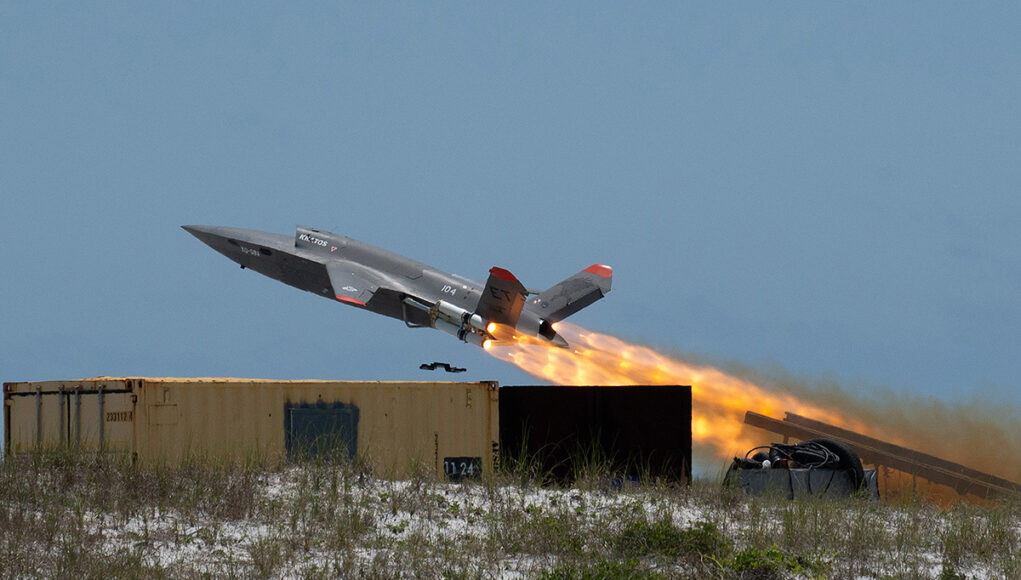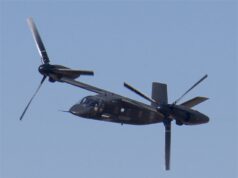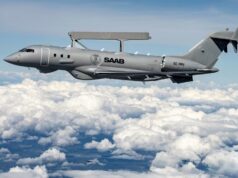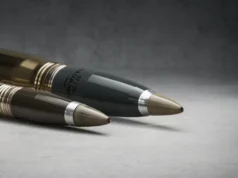The U.S. Air Force has successfully tested the use of autonomous aircraft alongside piloted jets, putting them one step closer to fielding human-machine teams in future air combat.
In a recent exercise at Eglin Air Force Base in Florida, F-16C and F-15E pilots each controlled two XQ-58A Valkyrie drones in a simulated combat scenario, demonstrating real-time integration between crewed and semi-autonomous systems.
The trial forms part of the U.S. Air Force’s wider development of Autonomous Collaborative Platforms (ACPs): low-cost, runway-flexible aircraft designed to operate in high-risk environments while reducing the burden on human pilots.
“This test with ACPs directly addresses the evolving requirements of modern warfare and the needs articulated by our warfighters,” said General Ken Wilsbach, commander of Air Combat Command. “We are committed to innovation and integrating ACPs through these kinds of demanding, operator-driven evaluations that allow us to learn rapidly and enhance our human-machine teams.”
Unlike conventional drones, ACPs are designed to act as intelligent wingmen, capable of receiving real-time direction from pilots and adjusting dynamically to mission needs. Tasks could include electronic warfare, reconnaissance, jamming, and strike roles, all while keeping aircrew at safer distances.
“With this flight, we mark a crucial step in developing capabilities that harness human-machine teaming to overcome complex threats and expand our advantages,” said Brigadier General Jason Bartolomei, commander of the Air Force Research Laboratory. “By developing and integrating autonomous platforms with manned systems, we can quickly adapt, increase combat effectiveness and reduce risk to our aircrews in contested environments.”
The exercise was conducted under the U.S. Department of Defense’s Rapid Defense Experimentation Reserve programme, with contributions from the U.S. Navy, Air Force Materiel Command, Air Combat Command, and the Air Force Test Center.
The Valkyrie, developed under the U.S. Air Force’s Low-Cost Attritable Aircraft Technology (LCAAT) initiative, is built for affordability, survivability, and rapid production. Its modular architecture enables a wide range of payloads and mission profiles, and it can operate without traditional runway infrastructure.
The data collected from this trial will shape future developments across the Department of Defense, as the U.S. military seeks to field operational human-machine teams that can generate combat mass, increase operational flexibility, and maintain a strategic edge in increasingly contested airspaces.














This is the future, and I wonder when we will see the first pilotless F-35A and B?
That’s an interesting idea I had never contemplated but other than just perhaps being a testbed for potential systems for something else I can’t see that as anything but a remote possibility but less costly and complex platforms like F-16 that’s already gone down that road seems a more logical testbed. Just think such platforms need to be conceptualised with autonomy envisaged throughout the process from scratch to be really effective, certainly something really complex such as an F-35. But ai is developing at such a pace one can’t ex Luke almost anything beyond 5 year windows and as we are all clearly part of a complex video game we are all subject to the unexpected actions of our game playing overlords. 😱